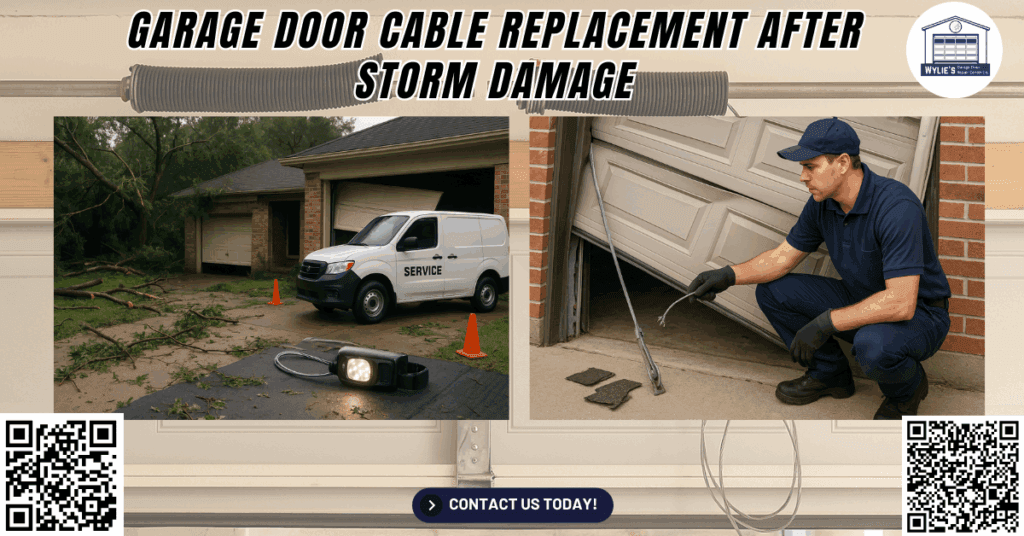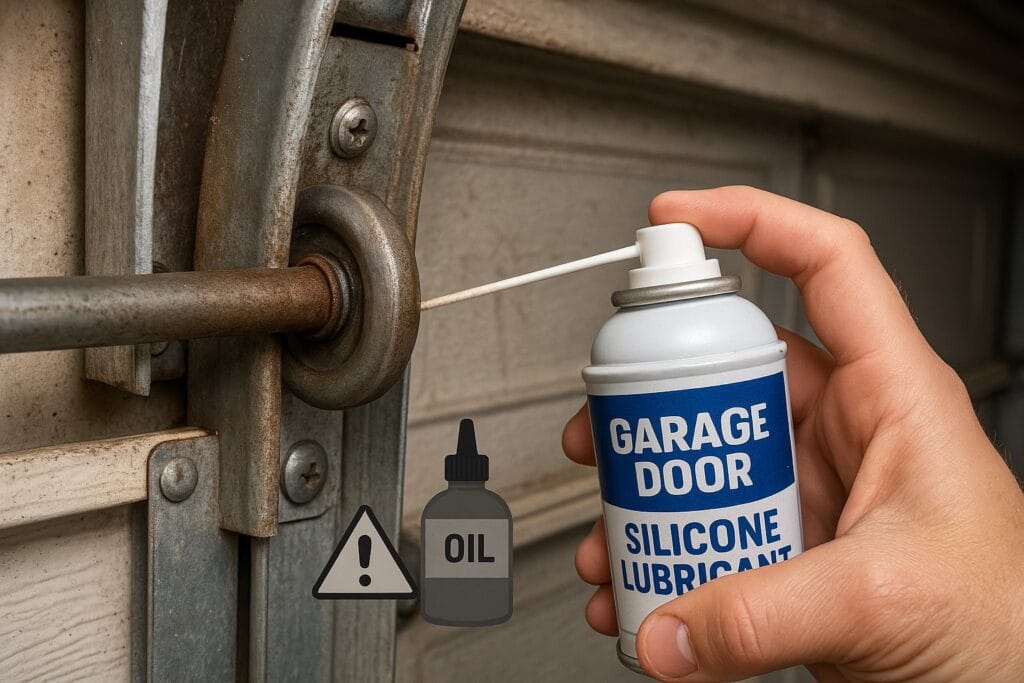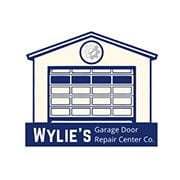Garage Door Cable Replacement After Storm Damage

Not long ago, a homeowner in Wylie, TX, reached out to us with a serious concern. After a strong thunderstorm swept through the area, their garage door suddenly stopped working. When our technicians arrived, we discovered that both garage door cables had snapped due to corrosion from standing water and stress on the spring-loaded system. The door had become unbalanced and unsafe to operate. Fortunately, our team replaced the broken garage door cables with new cables rated for their door’s weight and tension. This not only restored full functionality but also ensured the safe operation of the entire garage door system.
According to the Insurance Information Institute, about 1 in 50 homes in the U.S. files a claim for property damage caused by wind and hail annually. Storms in Texas, especially in areas like Wylie and the Dallas Metroplex, bring a mix of heavy rain, hail, and strong winds. These weather events take a toll on the mechanical parts of your garage door, particularly the cables, springs, and opener system. Left unchecked, storm-related wear and tear can result in snapped cables, off-track doors, and even spring failure.
That’s why it’s important to prioritize garage door cable replacement after a major storm. In this comprehensive guide, we’ll break down how storms affect your garage door system, the signs of damage, why replacement is necessary, and what steps are involved. Whether you own a residential home or operate a commercial building, understanding this process can help protect your investment and keep your family or staff safe.
What Storm Damage Does to Garage Door Cables
Water Exposure and Rust
Storms often result in water pooling inside the garage, especially if the seal at the bottom of the door is compromised. Garage door cables, which are typically made of tightly wound steel wire, are particularly vulnerable to rust. When exposed to moisture, these cables can corrode rapidly, weakening their ability to handle the door’s weight and spring tension. Rust not only affects the surface but also reduces the cable’s structural integrity, making it more prone to fraying or snapping. Even light corrosion can lead to cable failure under the high tension typical of torsion or extension spring systems.

Wind and Impact Stress
High winds exert powerful forces on garage doors, especially larger ones used for commercial properties or universal doors. Wind can push the door out of alignment or cause it to slam against its frame, increasing stress on the cables, bottom brackets, and pulley system. In extreme cases, the garage door may go off-track, and the cables can unwind from the cable drum or get tangled. A misaligned or jammed garage door often puts excessive strain on a single cable, leading to accelerated wear or immediate failure.
Debris and Mechanical Blockage
Storms can bring flying debris into and around the garage. Branches, gravel, or hail can obstruct the tracks or wrap around the pulley system and cables. When this happens, the garage door opener may struggle to lift the door, increasing tension on the cables and springs. Damage from foreign objects can result in the cables unspooling unevenly or even causing the drum to crack. Regular maintenance and immediate post-storm inspections are crucial to identifying these kinds of hidden issues before they become severe.
Signs You Need Garage Door Cable Replacement After a Storm
Spotting a failing garage door cable early can prevent injuries and major repairs. Here are the most common signs homeowners and business owners should look for after storm damage:
- Fraying or Rust: If the cables appear rusty, frayed, or have broken strands near the bottom bracket, it’s time for a replacement.
- Uneven Door Movement: If one side of the garage door lifts higher than the other, or it leans, it indicates a tension imbalance, often due to a cable issue.
- Loud Noises: Grinding, squeaking, or popping during operation may signal damaged pulleys or cable drums.
- Slack Cables: Door cables should be taut. If they’re loose or appear to dangle from the pulley system, they’re likely broken or disconnected.
- Sudden Slams: A garage door that slams down unexpectedly may have lost one of its supporting cables or suffered spring tension failure.
Recognizing these signs early and contacting professional help is essential. Don’t attempt cable repairs on your own; garage door systems involve high-tension springs and heavy hardware, making DIY fixes a safety hazard.
Why Prompt Cable Replacement Matters
Preventing Bigger Repairs
A broken garage door cable puts undue stress on the entire garage door system. The remaining cable, opener, springs, and drum have to compensate, which increases wear and the likelihood of failure. Without proper balance, even a high-quality opener can burn out. Timely cable replacement protects other garage door parts from damage and helps maintain smooth operation.
Ensuring Safety
Garage door cables play a crucial role in lifting and lowering the door safely. When they snap, the door can fall suddenly, potentially injuring people, pets, or damaging your vehicle and belongings. Professional garage door services prioritize safety precautions during replacement, using personal protective equipment (PPE) and the right tools to minimize risk.
Maintaining Secure Access
A broken garage door disrupts access to your home or business. In emergencies, you may find yourself locked out or unable to secure the premises. By replacing old cables with new ones promptly, you ensure safe operation and uninterrupted access to your garage and property.
What Happens During a Garage Door Cable Replacement
At Wylie’s Garage Door Repair Center Co., we follow a detailed, step-by-step guide to ensure cable replacement is done safely and correctly.
Step 1: Inspection
We begin by disconnecting the garage door opener and manually inspecting the entire system. This includes examining the garage door springs, pulleys, cable drums, bottom brackets, and tracking for signs of damage, corrosion, or imbalance. Our goal is to determine whether the issue lies solely with the cables or involves other critical garage door parts.
Step 2: Tension Release and Safety Setup
Before we can remove the cables, we must release the spring tension. Using winding bars, locking pliers, and safety glasses, our technicians carefully unwind the torsion springs. This step is vital for injury prevention and maintaining system balance during the process.
Step 3: Cable Removal and Matching
We remove the broken cable and inspect the other for wear. Often, we recommend replacing both cables simultaneously to ensure even tension. We then select high-quality replacement cables rated to match your garage door’s size and spring system.
Step 4: Installation and Re-Tensioning
The new cable is threaded through the pulley system and securely attached to the bottom bracket and cable drum. We then rewind the springs to the correct level of tension. Tension is measured carefully to ensure both sides lift evenly and the door stays balanced.
Step 5: Testing and Final Checks
After the cable replacement, we reattach the opener, test the garage door through several full cycles, and listen for any signs of friction or imbalance. We adjust the force and travel limits if necessary and lubricate all moving parts for optimal performance.
Residential vs. Commercial Cable Replacement: What to Know
Residential garage doors and commercial garage doors differ in design, size, and operation frequency. Understanding these differences helps explain the variation in cable types and replacement requirements.
Residential Systems
Most homes use sectional garage doors with torsion or extension springs. These typically require lighter-duty cables rated for moderate daily use. Residential garage doors generally weigh between 130 to 300 pounds, and their cable systems reflect that load capacity. Cable drums are smaller, and the opener operates a few cycles daily.
Commercial Systems
In contrast, commercial or industrial garage doors may open dozens of times per day. They often span larger widths and use thicker torsion springs or dual-spring setups. Their cables are heavy-duty, sometimes galvanized, and are rated for high tension and continuous use. Replacing commercial cables requires experience with more robust components and attention to advanced safety devices such as tension monitors or automatic stops.
Regardless of the setting, cable replacement is not a no-action task, it requires planning, professional tools, and precision.
Common Misconceptions About Cable Replacement
“It’s Still Working, So It’s Fine.”
One of the most dangerous misconceptions is that visible operation equals safe operation. Garage door cables can fray or corrode slowly, and failure may happen suddenly during a routine cycle. Preventive replacement based on inspections helps avoid sudden damage.
“I Can Fix It Myself With Online Tutorials.”
DIY cable repair often overlooks the role of high-tension components. Without the right tools and training, a simple slip can cause serious injury. Professional help ensures the correct replacement cable, proper winding, and safe operation of your entire garage door system.
“Just Replace One Cable.”
Even if only one cable appears damaged, the other is likely worn from the same stress. Uneven wear causes the door to become unbalanced. Replacing both ensures even spring tension and reduces the need for repeat repairs.
Protecting Cables From Future Storm Damage
Preventive maintenance can significantly extend the life of your garage door cables, especially in storm-prone regions like Wylie, TX.
- Install Threshold Seals: Helps prevent standing water from pooling around the bottom brackets and cables.
- Regular Inspections: Schedule seasonal checks to assess rust, wear, and proper cable tension.
- Use Protective Covers: During storms, a cover or shield can reduce wind and debris damage to your garage door hardware.
- Lubricate Moving Parts: A light coating of garage door lubricant prevents moisture buildup and reduces metal-on-metal friction.

Simple, regular upkeep is an easy step toward preventing cable failure and improving the performance of your garage door system.
Frequently Asked Questions (FAQs)
1. Can garage door cables stretch over time, and what does that mean for performance?
Yes, garage door cables can stretch slightly over time, especially in high-use environments. This stretching may lead to slack in the system, causing the door to move unevenly or noisily, which can impact the balance and safety of the entire garage door system.
2. What type of maintenance can extend the life of garage door cables?
Regular lubrication with a silicone-based spray and keeping the bottom brackets clean and dry can prevent rust and corrosion. Scheduling a professional inspection at least once a year ensures early detection of wear before serious issues arise.
3. Are there different types of garage door cables, and how do I know which one I need?
Yes, there are torsion spring cables, extension spring cables, and safety cables—each designed for specific garage door systems. A professional can identify and install the correct type based on your door’s weight, size, and spring mechanism.
4. Can temperature changes affect garage door cables?
Extreme cold or heat can impact cable flexibility and tension. Cold temperatures may make the cables brittle and more likely to snap, while heat and humidity can accelerate corrosion if moisture is present.
How Can Wylie’s Garage Door Repair Center Co. Help You?
If you suspect cable damage after a recent storm, it’s time to act. Wylie’s Garage Door Repair Center Co. offers fast, reliable, and professional garage door cable replacement services for both homes and commercial properties. Our technicians use high-quality parts, advanced tools, and industry-approved methods to ensure your garage door system operates safely and smoothly.
We proudly serve Wylie, TX, and surrounding areas with same-day emergency service when needed. From broken cables to opener failures and full system replacements, we’re the trusted name for expert garage door repair.
📍 Address: 10000 Walnut St. Dallas, TX 75243
📞 Phone: (469) 838-5939
Call us today to schedule your inspection. Don’t wait until a small problem becomes a big safety issue, we’re here to help, no matter the weather.
Final Thoughts
Storm damage to garage doors is more common than most homeowners realize. Cables, often out of sight, play a crucial role in maintaining safe and balanced door movement. After storms, especially in regions prone to heavy wind and rain, it’s important to inspect cables, springs, and drums for wear or corrosion. Prompt garage door cable replacement not only protects your property but also prevents injuries and costly system failures.
Remember, your garage door system operates under high tension, and every part from the cable drum to the opener depends on proper alignment and maintenance. By working with a professional garage door company like Wylie’s Garage Door Repair Center Co., you gain peace of mind knowing every repair meets safety and performance standards. Don’t overlook this essential component of your home or business. Act early, stay informed, and keep your garage doors operating safely year-round.
